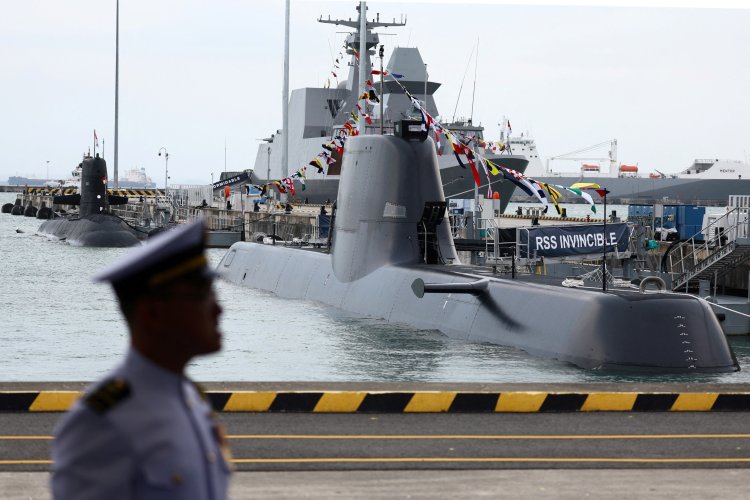Singapore commissions two advanced submarines

Singapore commissioned two new advanced submarines, vessels its navy says are meant to protect sea lines of communication.
The country's fifth and sixth submarines, the Invincible and the Impeccable, were ordered from Germany's ThyssenKrupp Marine Systems in 2013 in a 1-billion-euro deal, and join older Archer- and Challenger-class boats.
They represent a technological step forward for Singapore's fleet, experts say, allowing the wealthy Southeast Asian nation to operate farther from shore using fewer sailors, and making its craft among the quietest in the region. The two new Invincible-class submarines were moored at adjoining piers, decked in colorful naval pennants, with their X-shaped rudders peeking from the water, for that event at Changi Naval Base.
Prime Minister Lawrence Wong commissioned the vessels in a ceremony watched by their crew and military dignitaries in white dress uniforms gathered along with their families.
“As a maritime nation, Singapore's survival and prosperity depend on free and unimpeded movement over the seas. The assembly plays a critical role in keeping our sea lanes open and secure,” Wong said during a speech at the commissioning ceremony.
The Invincible class needs a complement of just 28 for each 70-meter, 2,200-ton submarine, and crew said that automation of time-consuming tasks made operations easier. They are also Singapore's first submarines with crew facilities for women, and both have female officers. For example, the Invincible class is armed only with heavyweight torpedoes, while Vietnam's Russian-designed Kilo submarines can carry land-attack cruise missiles. Two more Invincible-class boats for Singapore, the Illustrious and Inimitable, have been launched but not yet commissioned.
Nuclear-powered submarines, such as those of China, Russia and the United States, are quieter in some cases, with much higher top speeds and longer range, but cost several billion dollars each.















